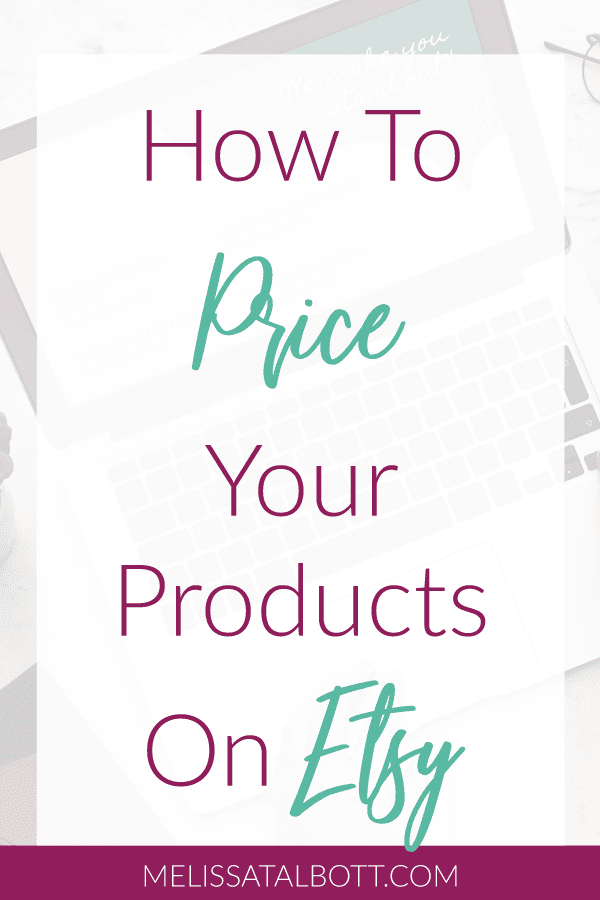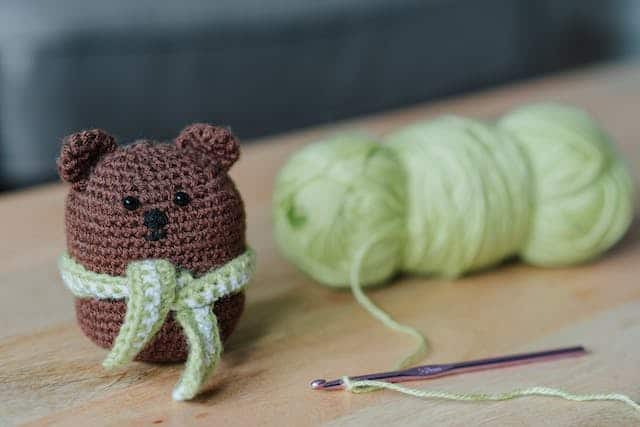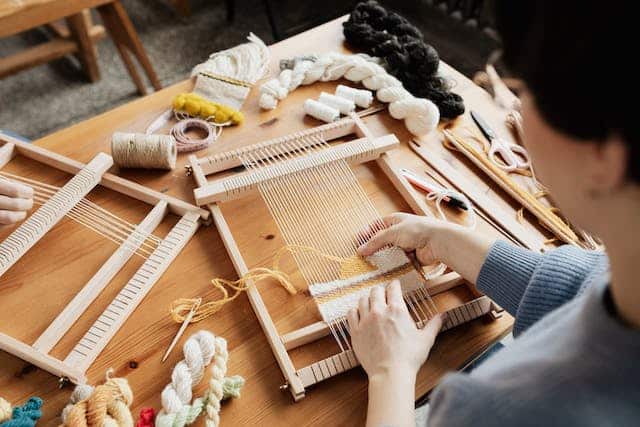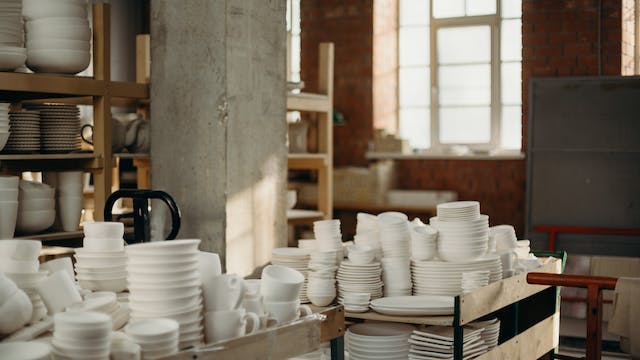How should I price the products I sell in my online Etsy store? Shopify Storefront? Amazon?
Am I priced too high? Am I priced too low?
All are questions newbie sellers and veteran sellers ask themselves. Constantly!
Let’s look at some ways to tell if you’re priced appropriately.
So, let’s just jump in.

Just a heads up! This blog post may contain affiliate links. That means if you make a purchase through one of those links, at no additional cost to you, I may make a commission from your purchase, which helps me provide this content to you!
HOW TO PRICE MY PRODUCTS ONLINE?
One thing to consider when pricing your items is, are you covering your costs?
To find the retail price for your products, you need to make sure you factor in all expenses of creating that products, the labor involved and any other expenses needed to run your business per item produced. This total expense is typically multiplied by 4 to get to your retail price per unit of product.
If you are covering your material costs but not taking into considerations all your other costs associated with selling your goods, like covering your own wages, transaction fees and processing fees charged by your marketplace or credit card processing company, shipping expenses, ads and more, then you aren’t going to be in business for very long.
The result of not covering all your bases is that you will essentially end up working for free. Your suppliers, shippers, Etsy or other online selling platform companies all want their money so you are left with whatever is left over, if any.
I know I don’t want to work for free and neither should you.

WHAT THINGS SHOULD I CONSIDER WHEN PRICING PRODUCTS?
Finding the right price for your items has many facets. It’s simply not a one-size-fits-all solution. Here are a few things to consider when deciding what your product prices should be.
- Business model
- Web hosting fees
- Marketplace fees
- Shipping expenses
- Packaging costs
- Material costs for raw materials
- Shipping costs to receive your raw materials
- Hourly wages for any employees
- Your wage or salary
- Skill level needed to make the product
- Time involved to make the product
- How many of this item you expect to sell in a given period
- Is it a physical item or digital
- The product life cycle
- Utility usage – electricity, water, waste management, etc.
- Internet fee and online storage
- Software subscriptions like Adobe products or Canva
- Marketing costs and online marketing software
- Building, store lease, mortgage, etc. – costs of the facility in which you manufacture your items
These are just some of the things you need to consider when setting your products’ prices.
WHAT PRICING FORMULA SHOULD I USE?
THERE ARE SO MANY.
This is different for every industry and niche.
The pricing formula you should use to price your products will depend mostly on the business model, your skill level and the type of product you are selling.
The standard pricing formula is total cost times 4. Your costs would factor in all the expenses per item produced and multiply that by 2 for your wholesale price and multiply by 2 again for your retail price.

But not all pricing models will work for your particular business.
Pricing formula examples
Here’s an example.
For some items that are higher in labor such as a custom designed and cast wedding ring, you may use a formula like this one or one similar.
(design fee x 3) + cost of production = retail price
In this case, you may be working with a manufacturer or metalsmith to make the actual item, and you’re being paid for your time of designing the ring and including a markup (the x 3 part).
This markup pays your design labor and is then used for marketing, grow your business, overhead expenses, etc. Your production costs could include things such as custom casting, specialty sourced gemstones, metals, etc.
Now, for more standard physical products that are designed once then made and sold many times over, you may use a formula like this one below. This pricing strategy is used across many niches.
Standard product pricing formula
(Materials + labor + overhead) x 4 = retail price
Like above, it is your costs time 2 for your wholesale price and then times 2 for your retail price or, like shown, times 4 for the simplified version, if you don’t have the need for wholesale pricing in your business model.
There are many other pricing formulas and strategies. There are also other formulas for physical product pricing vs. digital product pricing.

In the case with digital products and printable products, many designers use a formula that accounts for their labor (time needed to design the digital product) divided by the expected number of sales plus the cost of software and other overhead expenses divided by the number of expected sales. The per unit labor plus expenses times your markup (profit multiplier) would be your retail price.
With digital products, you would expect to sell these items sometime thousands of times so your per unit expense is very small. This is one of the reasons digital products are significantly cheaper than physical, handcrafted items.
You’ll have to see which formula works best for your business model and product line and compare it to what other sellers of similar items use to see if your product pricing is in line with the industry standard.
Check out this Product Pricing Calculator Spreadsheet to easily add up your material costs, add profit margin markups and figure out what your product prices should be.
As a special note, don’t forget to account for your listing fees, marketplace fees, platform and domain hosting fees. These are easily missed when pricing your products, but these do have an impact on your bottom line. Check out my article about Etsy Listing Fees Explained to make sure you are properly accounting for your Etsy seller fees.
What to do if my prices are higher than my competitors?
If you are looking to price your items similar to other sellers, but you see your prices are significantly higher, check to see if you are correctly calculating your prices. Are you accurately figuring time involved, materials, fees, shipping costs, etc.?
Are your competitors including the shipping in the cost of the item or is it separated and shown in the Shipping section instead of included in the item’s retail price?
Cost and pricing analysis
Also, look at what pricing formulas are standard for your industry. Are you using a similar formula to calculate your prices?
By using a similar formula as others in your niche and comparing your prices, you may see that you’re paying significantly more for your materials, for example.
In this instance, you need to explore other suppliers to cut your costs and stay more competitive. You can also explore wholesale material suppliers if you have been purchasing your supplies through your local craft stores up to this point.
This usually involves a few more steps and/or paperwork but can have a large impact on how much you pay for your supplies and can dramatically reduce your expenses.
Looking to the industry standards, you can also see what labor rates are typically used. You may have priced your labor costs higher than other makers of a similar skill level. To charge more for your labor, you may need to up your design skills to offer expert level designs.

What if my prices are lower than my competitors? Should I raise my prices?
This is a complex topic.
If you are priced significantly lower, you may be missing some costs in your pricing formula and you should consider raising your retail prices.
Home-based businesses
I tend to see this most commonly among “hobbyist” sellers. The hobbyist Etsy seller typically doesn’t include enough expense for their labor and isn’t including all cost of seller their products like sales transaction fees and other common business expenses like utilities office space (as these are just part of your normal home expenses).
As a home-based business, you normally * would be including a part of your monthly home expenses (typically allocated as the percentage of square footage used for your “business”) as an overhead expense included in your pricing.
* Note – be sure to check with your accountant on how to figure this expense for filing your business taxes and whether this is a tax deduction for your business.
Is this you? Are you pricing as a hobbyist, just trying to get your material costs back and not really paying yourself for your time?
Don’t forget to join my FREE Etsy Seller Success Facebook Group!
Wholesale materials and supplies
Or it could be as simple as you’re getting better discounts on your material than other makers. But it doesn’t mean that your product is any less valuable and should still stay competitively priced, you just could be lucky and are making higher profit margins. Yeah you!
There are many benefits to purchasing supplies and materials used to make your products from wholesale businesses. You will usually get a significant discount on the materials themselves. You also likely won’t have to pay tax on the materials like you do when you buy from retailers like Hobby Lobby, Michaels and Jo Anne’s.
If you are buying materials wholesale, you should be passing the tax burden onto your buyer.
Product’s perceived value
Buyers purchase many items based on the value they see in the item. They don’t know your costs involved in producing that item.
If what I’ve already said it’s enough to convince you to raise your price. Here’s another reason to consider.
When priced to low, your product is seen as inferior in the buyer’s eyes. Not good. People won’t purchase because they see the item as of lesser value than others in the niche.
Your buyer is thinking, “Did the maker use crappy materials?” “Will this fall apart in a month?” “Are they not paying their employees well, AKA, sweat shops?”
Buyers are just as unlikely to buy super cheap items as they are to buy really expensive items compared to their equals.
If you are underpricing your products, it’s possible that you aren’t paying yourself appropriately either, this leads to burn out.
Or you could be undercutting your competitors. Please don’t do this. I know it can be tempting, but just don’t.
This then can lead to all sorts of issues, like devaluing the entire niche, taking sales from other properly priced products (which could get you short-term gains, but long-term, results in next to nothing profit for all involved sellers, back to burn out or you giving up entirely on sell your products).
Avoid the race to the bottom
In my personal opinion, I would say to raise your prices if you are priced lower than your competitors. There are many issues that arise when sellers price lower and lower and lower in a bid to gain sales from their competition.
This is what we call the race to the bottom. It’s not like winning a downhill skiing race where you want to get there first. But the exact opposite. You don’t win a shiny metal. You actual lose. And so does every other seller in that niche.

You don’t want to be caught in the downward spiral. When a few sellers start undercutting the prices of the majority of sellers, this begins to happen. NO ONE WINS!
This tactic further devalues the products. DON’T DO IT!
Why shouldn’t I be priced at the bottom though? People like a good deal right!?!
And one more reason, just for good measure.
Volume vs quality
If you want to lowball your prices, you also have to be ready to pump out a HUGE volume of goods to make sure you are getting enough profit to cover all your costs and still eat at the end of the month.
Again, possibly leading to burn out. No Bueno.
To see if you’re on the road to burn out and what to do about it, check out this article next.

How to increase your product prices?
Won’t buyers stop buying?
Buyers will continue to buy from your business if you are making small, incremental price increases over time. Buyers are used to small price increases from time to time and is typically expected about once a year in most businesses.
Right now, many sellers are doing incremental increases as their costs are rapidly shifting upward in today’s ever-changing economy.
If you have an existing mailing list, use the time before the price increase to market to your buyers. Just giving them a quick heads up. This sometimes will bring in some extra sales, and your buyers will feel valued that you let them know first before the changes.
It will trigger the theory of reciprocity.
You’re giving me a heads up and bargain, so I’ll be more inclined to buy right instead of waiting and having to pay more later.
And adding in a bit of urgency to get them motivated to make the purchase before it’s too late and the price goes up. We see this all the time in marketing.
So, here is a great place to give a great deal, gain more trust with your buyers and get a bit of a boost in sales.
NOT by undercutting! Never by undercutting.

Why would I need to raise my prices?
Increasing your prices could be done for a wide range reasons. Here are just a few.
You want higher margins and higher profits.
You’re tired of feeling burnt out. Working too many hours that are taking you away from other things you want in life. No happy work-life balance. You may also feel like your time isn’t valued or paid for. This leads to overwhelm and burn out. No one likes to feel like they work for free.
Check out this article if you are feeling the burn of burn out and find out what to do about it.
You’ve added more value to your products
This can be done by upping the design quality or using better materials.
Or maybe you’re now bundling popular items together. This increases the cost of production and warrants a price increase for a bundle compared to a single item.
You’re also increasing the cart value per customer. This increases the customer lifetime value (CFV). If the buyer sees more value, they’ll be willing to pay more for the item(s). -A little buyer psychology here.- This is a good thing!! It means you could be getting more profit from a single buyer. WHOOP! More moolah for you.
You want to advertise more
You’re looking to expand your current customer base. More buyers, more dollars for you.
Advertising costs money. Whether paying for Facebook ads for your website or paying for on-site Etsy ads, this is going to impact your bottom line, and you may need to increase your prices to cover the cost of ads.

You need to make your pricing in alignment with your competitors.
Now, we’ve already gone over the reasons above why you should raise your prices so I don’t need to repeat that again here.
Your costs have gone up.
Well, crap. This is going to happen though!!
Don’t be afraid to raise your prices to cover these costs. It’s part of doing business.
Let me repeat – IT IS PART OF DOING BUSINESS!
Your material costs rise, your shipping costs go up, your web host costs rise, your sales transaction fees go up. Your prices need to rise as well, or you will be working for free at some point as your expenses slowly overtake your profits.
Read more about Etsy’s seller fees here.
Want an easy way to calculate your Etsy seller fees and make sure they aren’t eating too much into your profits? Check out this simple Etsy Seller Fees Calculator.
HOW TO MAKE MORE MONEY WITHOUT RAISING PRICES?
For sellers who are going to keep their prices the same even though other costs are rising, this is my warning to you.
It will need to happen, you will eventually need to raise prices, but you may be able to push this off for a short period of time. By prolonging this though, you risk your business failing.
If you want to make more money from your existing products as they are currently priced (aka – more money in the bank without raising prices), you could look at these options.
Ways to make more money in your business without raising prices
- Offering more complex products or bundles
- Find better wholesalers for materials
- Negotiate better shipping rates with shipping companies
- Cut products or product lines that are not selling well and costing you more than you are making from them

The costs associated with shipping and materials don’t typically come back down once they’ve gone up.
We’ve all seen the large increases in our supplier costs, shipping fees, etc. in the last few years which is passed on to us as sellers for items we purchase to run our business.
We are then tasked with passing it on to the end buyer. Your business won’t be able to sustain taking these additional costs from your profits for long.
Covid has made this process a daunting task as prices seem to constantly be rising along with inflation. I know from experience that I, too, was resistant initially to raising prices. But this is simply not something we can avoid indefinitely.
Increasing your prices could be done to add more value like using better materials, increase your margin percentage to allow you to pay yourself a better wage or to cover additional marketing or expansion of your business.
When all is said and done, you have two choices. To raise prices or eat them. What decision will you make?
Reading this article to decide it Etsy is right for you? Use this link to get 40 FREE listing credits!!
Don’t forget to request to join the FREE Facebook group and drop your email in the Subscribe box for more Etsy shop goodies.






